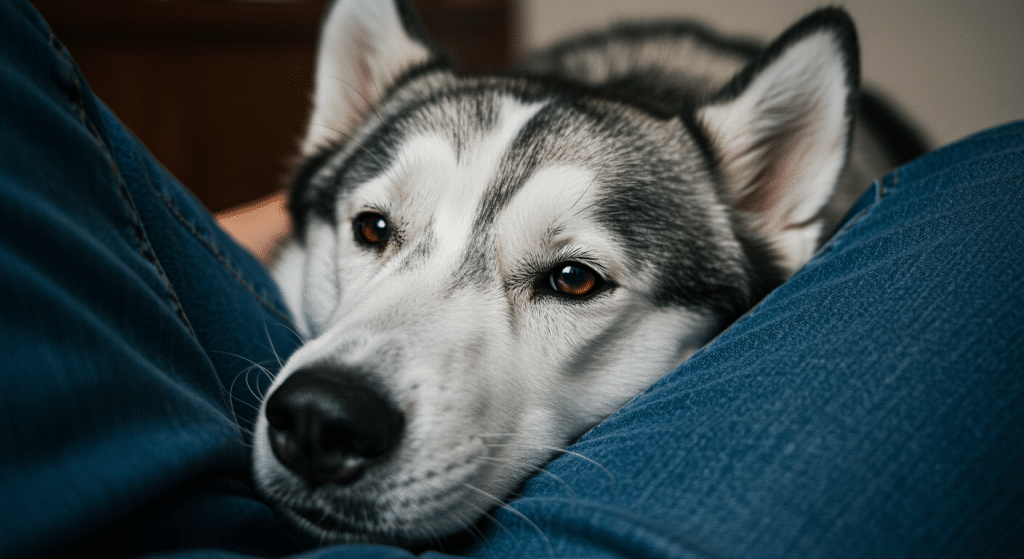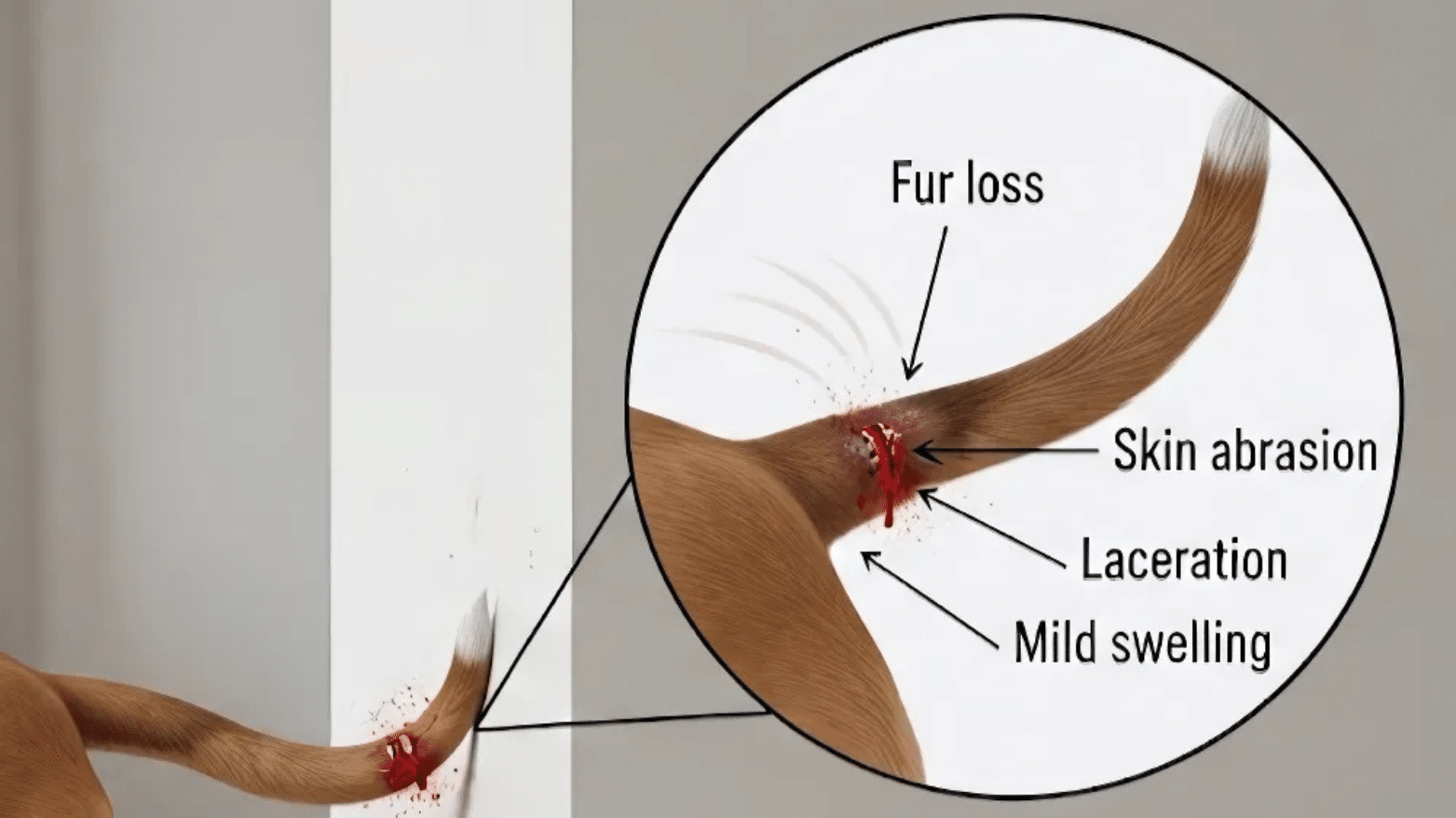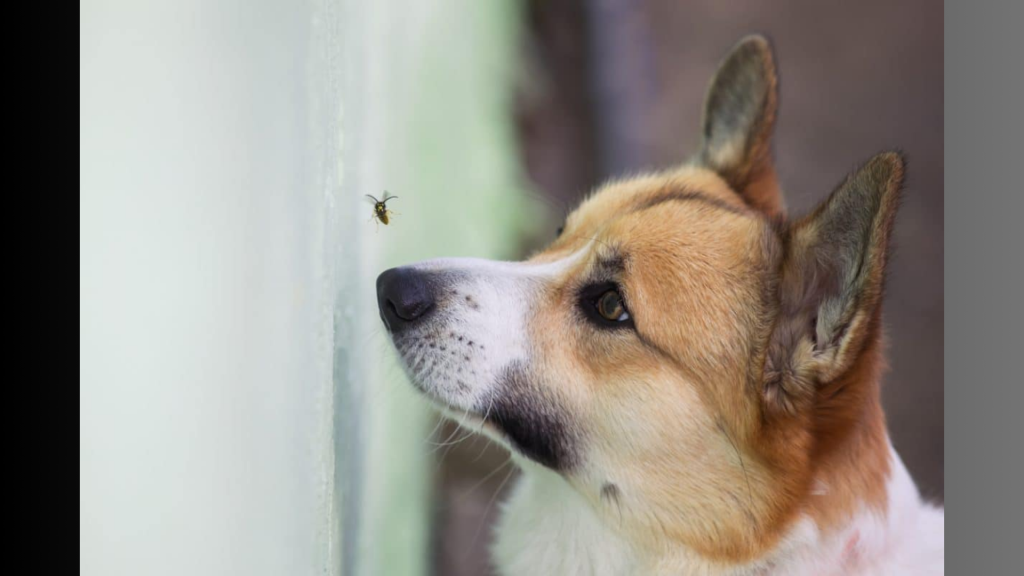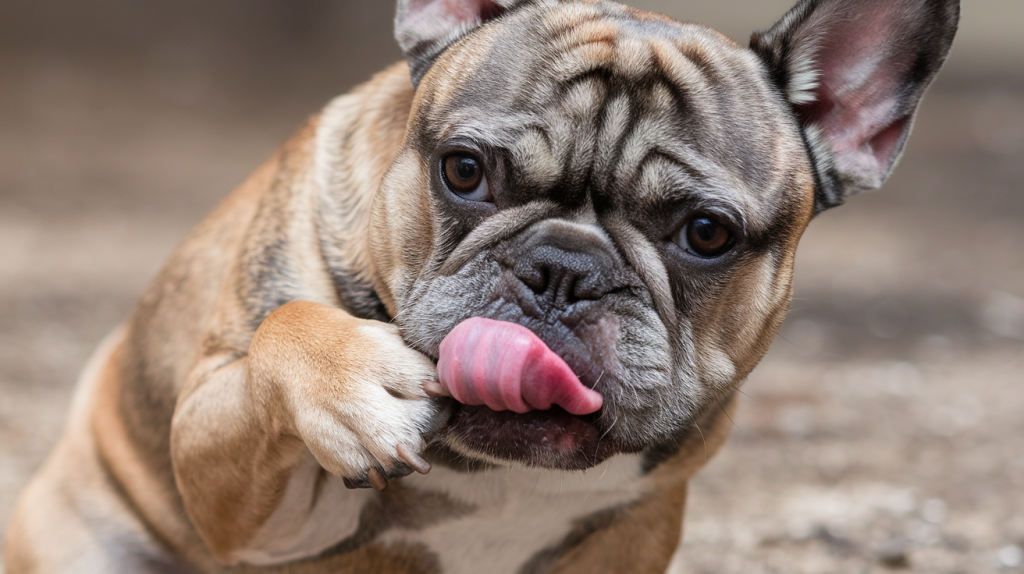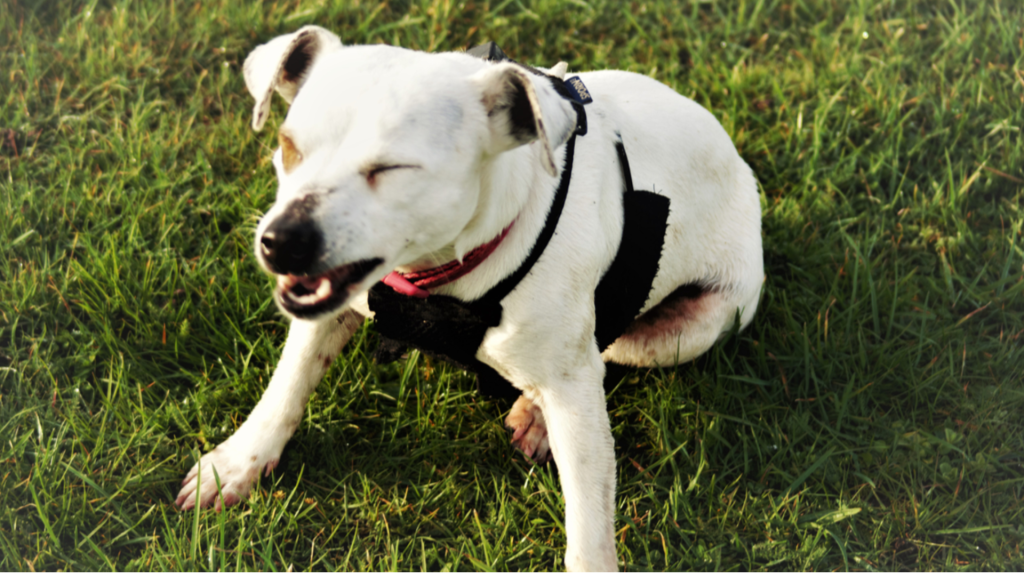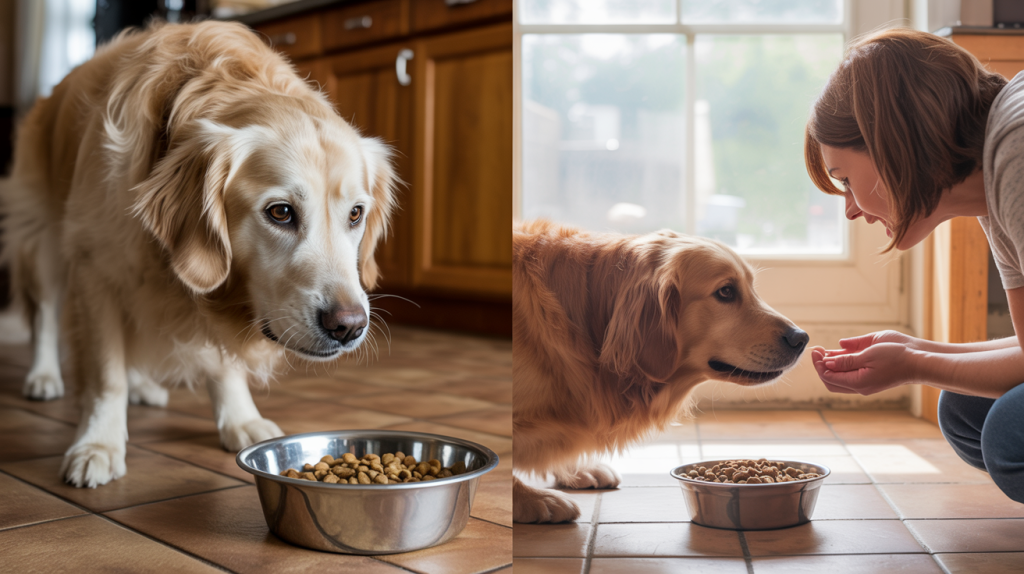Does your dog’s tail never seem to stop wagging? While most pet owners love seeing their furry friend’s enthusiasm, there’s a condition that can turn this joyful behavior into a painful problem.
Happy tail syndrome affects dogs who wag their tails so vigorously that they injure themselves repeatedly. The constant hitting against walls, furniture, or other surfaces can cause wounds that refuse to heal. This condition is more common than you might think, especially in certain breeds.
By understanding what to look for and how to respond, you’ll be able to protect your dog from unnecessary pain and keep that tail wagging safely.
Let’s find out how to identify this condition before it becomes a serious issue.
Understanding Happy Tail Syndrome
What is happy tail in dogs? It’s a condition where dogs injure their tails through excessive wagging. The name might sound cheerful, but the reality is quite different for affected pets.
This happens when dogs wag their tails so hard and fast that they repeatedly hit solid surfaces.
Think walls, door frames, furniture, or even crate bars. Each impact creates small cuts or splits, usually at the tip of the tail where the skin is thinnest.
The problem worsens because dogs don’t realize they’re hurting themselves. They keep wagging, reopening wounds before they can heal. Blood splatters everywhere – on walls, furniture, and around the house.
The tail becomes a constant source of pain, yet the dog’s natural instinct is to keep expressing joy through wagging. It’s a frustrating cycle that requires careful management.
Common Causes of Happy Tail in Dogs
Several factors contribute to this painful condition. Some dogs are simply more prone to it based on their breed and personality traits.
Breed-Related Factors
Certain dog breeds are naturally at higher risk due to their physical build and temperament.
- Large breeds with powerful, muscular tails (Great Danes, Labradors, German Shepherds)
- Dogs with thin-skinned tail tips that split easily
- Breeds known for enthusiastic wagging behaviors
Environmental Triggers
The surroundings where your dog spends time can create dangerous wagging situations.
- Narrow spaces like hallways or small rooms
- Hard surfaces such as concrete walls or metal crates
- Low ceilings that cause tail strikes
- Furniture with sharp edges
Behavioral Causes
Your dog’s emotional state and reactions play a major role in developing this condition.
- Overly excited dogs who can’t control their enthusiasm
- Anxious pets who wag excessively when stressed
- Dogs left alone in confined spaces for long periods
The most common scenario involves excited dogs in tight quarters. When they see their owners return home, their joy becomes uncontrollable.
The confined space means every wag hits something solid, creating the perfect storm for injury.
Key Symptoms to Look out For
Spotting tail syndrome early can save your dog from prolonged pain and prevent the condition from getting worse. Here are the main warning signs every pet owner should watch for.
1. Visible Cuts or Splits on the Tail Tip: Small wounds appear at the very end of the tail, often looking like paper cuts that won’t heal.
2. Blood Spatters Around Your Home: You’ll notice red droplets on walls, furniture, or floors where your dog has been wagging.
3. Repeated Tail Injuries: The same spot keeps getting hurt over and over, never having time to properly heal.
4. Pain When Touching the Tail: Your dog may pull away, whimper, or show discomfort when you gently examine their tail.
5. Excessive Licking of the Tail: Dogs often lick wounded areas, which can make the problem worse by keeping wounds moist.
Differentiating Happy Tail from Other Tail Injuries
Not all tail problems are happy tail. Understanding the differences helps you provide the right care and know when to seek veterinary help.
| Condition | Location | Cause | Appearance | Healing Pattern |
|---|---|---|---|---|
| Happy Tail Syndrome | Tail tip only | Repeatedly hitting surfaces | Small splits, blood spatters | Keeps reopening |
| Bite Wounds | Anywhere on the tail | Other animals | Puncture marks, deeper cuts | Usually heals if kept clean |
| Trauma Injury | Any location | Accident or fall | Bruising, swelling, possible break | One-time injury heals normally |
| Skin Infection | Multiple spots | Bacteria or allergies | Red, inflamed patches | Responds to medication |
| Frostbite | Tail tip | Cold exposure | Black or dark coloring | Tissue may die and fall off |
The key difference is that happy tail involves repeated self-injury at the same spot, creating a cycle that’s hard to break.
Potential Complications if this Syndrome Goes Unnoticed
Ignoring this tail syndrome can lead to serious health problems that go far beyond a simple cut.
The longer you wait, the harder it becomes to treat. Infections are the most common complication. Open wounds exposed to bacteria can develop into painful abscesses. The constant moisture from licking makes healing nearly impossible.
Chronic pain becomes a daily reality for your dog. What starts as minor discomfort can turn into ongoing suffering that affects their quality of life.
In severe cases, the tail tip may die from repeated trauma. Dead tissue turns black and eventually falls off, creating an even bigger wound. Some dogs develop behavioral changes from the constant pain. They may become less active, lose their appetite, or show signs of depression.
The worst-case scenario requires surgical amputation of part of the tail to stop the cycle of injury.
Prevention Tips to Avoid Happy Tail Syndrome Altogether
Stopping a happy tail before it starts is much easier than treating it later. With some simple changes to your dog’s environment and routine, you can keep their tail safe while they express their joy.
- Create wider spaces around your dog’s favorite areas by moving furniture away from walls
- Use soft padding on walls and surfaces where your dog often wags their tail
- Choose spacious crates that allow full tail movement without hitting the sides
- Keep your dog’s nails trimmed to reduce scratching and secondary injuries
- Train calm greetings to reduce overly excited tail wagging when you come home
- Provide mental stimulation to help manage your dog’s energy levels throughout the day
- Consider tail guards or protective wraps for high-risk breeds during active periods
Wrapping It Up
Happy tail syndrome might seem like a minor issue, but it can seriously impact your dog’s well-being if left untreated. The good news is that most cases are preventable with simple environmental changes and awareness.
Remember, early detection makes all the difference. Watch for those telltale blood spots and tail tip injuries. Your dog doesn’t understand they’re hurting themselves, so it’s up to you to step in. If you notice any signs we’ve discussed, don’t wait. Contact your vet for proper treatment options.
What prevention tips will you try first? Share your experiences in the comments below – other dog owners can benefit from your insights too.

